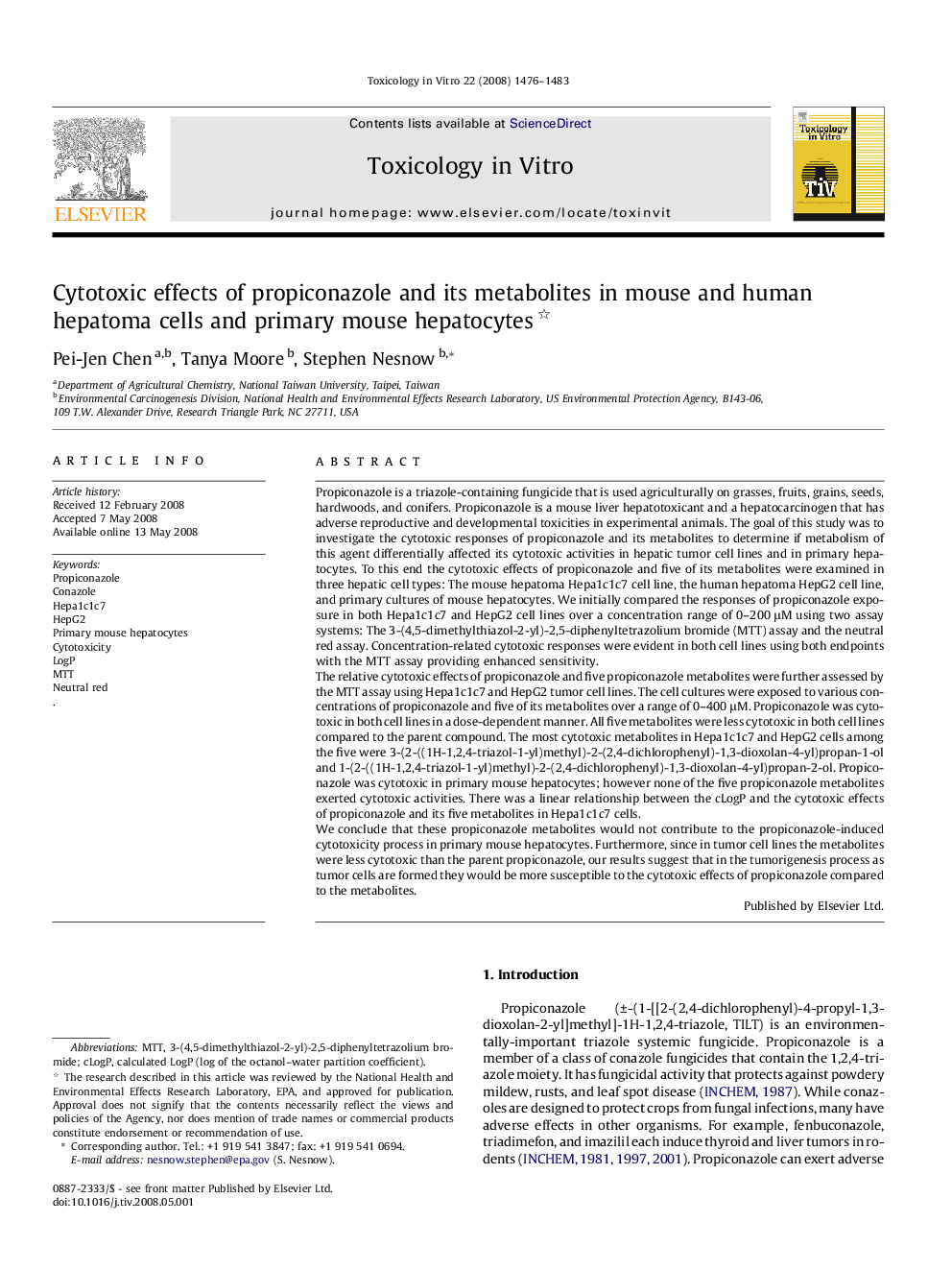| کد مقاله | کد نشریه | سال انتشار | مقاله انگلیسی | نسخه تمام متن |
|---|---|---|---|---|
| 2603090 | 1133808 | 2008 | 8 صفحه PDF | دانلود رایگان |

Propiconazole is a triazole-containing fungicide that is used agriculturally on grasses, fruits, grains, seeds, hardwoods, and conifers. Propiconazole is a mouse liver hepatotoxicant and a hepatocarcinogen that has adverse reproductive and developmental toxicities in experimental animals. The goal of this study was to investigate the cytotoxic responses of propiconazole and its metabolites to determine if metabolism of this agent differentially affected its cytotoxic activities in hepatic tumor cell lines and in primary hepatocytes. To this end the cytotoxic effects of propiconazole and five of its metabolites were examined in three hepatic cell types: The mouse hepatoma Hepa1c1c7 cell line, the human hepatoma HepG2 cell line, and primary cultures of mouse hepatocytes. We initially compared the responses of propiconazole exposure in both Hepa1c1c7 and HepG2 cell lines over a concentration range of 0–200 μM using two assay systems: The 3-(4,5-dimethylthiazol-2-yl)-2,5-diphenyltetrazolium bromide (MTT) assay and the neutral red assay. Concentration-related cytotoxic responses were evident in both cell lines using both endpoints with the MTT assay providing enhanced sensitivity.The relative cytotoxic effects of propiconazole and five propiconazole metabolites were further assessed by the MTT assay using Hepa1c1c7 and HepG2 tumor cell lines. The cell cultures were exposed to various concentrations of propiconazole and five of its metabolites over a range of 0–400 μM. Propiconazole was cytotoxic in both cell lines in a dose-dependent manner. All five metabolites were less cytotoxic in both cell lines compared to the parent compound. The most cytotoxic metabolites in Hepa1c1c7 and HepG2 cells among the five were 3-(2-((1H-1,2,4-triazol-1-yl)methyl)-2-(2,4-dichlorophenyl)-1,3-dioxolan-4-yl)propan-1-ol and 1-(2-((1H-1,2,4-triazol-1-yl)methyl)-2-(2,4-dichlorophenyl)-1,3-dioxolan-4-yl)propan-2-ol. Propiconazole was cytotoxic in primary mouse hepatocytes; however none of the five propiconazole metabolites exerted cytotoxic activities. There was a linear relationship between the cLogP and the cytotoxic effects of propiconazole and its five metabolites in Hepa1c1c7 cells.We conclude that these propiconazole metabolites would not contribute to the propiconazole-induced cytotoxicity process in primary mouse hepatocytes. Furthermore, since in tumor cell lines the metabolites were less cytotoxic than the parent propiconazole, our results suggest that in the tumorigenesis process as tumor cells are formed they would be more susceptible to the cytotoxic effects of propiconazole compared to the metabolites.
Journal: Toxicology in Vitro - Volume 22, Issue 6, September 2008, Pages 1476–1483